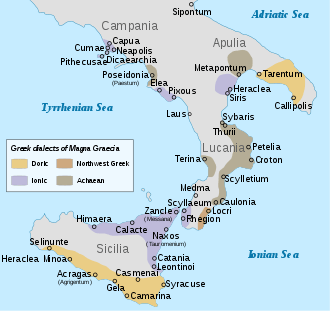Mycenology
Mycenology is the study of the Mycenaean Greek language and the culture and institutions recorded in that language. It emerged as a discipline auxiliary to classical philology in 1953, following the deciphering of Minoan Linear B script by Alice Kober, Michael Ventris and John Chadwick.[2][3]

Death mask, known as the Mask of Agamemnon, Grave Circle A, Mycenae, 16th century BC, probably the most famous artifact of Mycenaean Greece.[1]
References
- Burns, Bryan E. (2010). Mycenaean Greece, Mediterranean Commerce and the Formation of Identity (1st ed.). New York: Cambridge University Press. ISBN 9780521119542.
The most famous object from Shaft Grave V, if not all of Mycenaean Greece, is the gold mask popularly known as the "mask of Agamemnon".
- Brown, W. Edward (1960-01-01). "An Introduction to Mycenology". The Classical World. 53 (6): 186–191. doi:10.2307/4344324. JSTOR 4344324.
- "Cracking the code: the decipherment of Linear B 60 years on". University of Cambridge. 2012-10-13. Retrieved 2017-01-23.
| |||||||||||||||||||||||||
| |||||||||||||||||||||||||
| |||||||||||||||||||||||||
| |||||||||||||||||||||||||
| |||||||||||||||||||||||||
| |||||||||||||||||||||||||
| |||||||||||||||||||||||||
This article is issued from Wikipedia. The text is licensed under Creative Commons - Attribution - Sharealike. Additional terms may apply for the media files.
